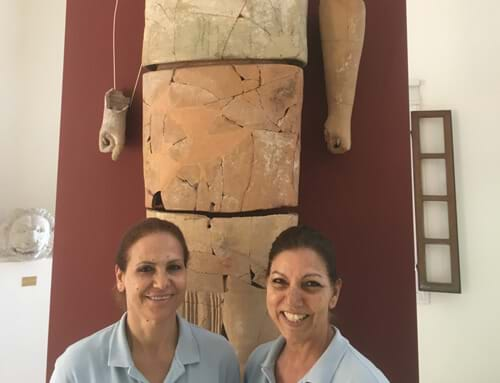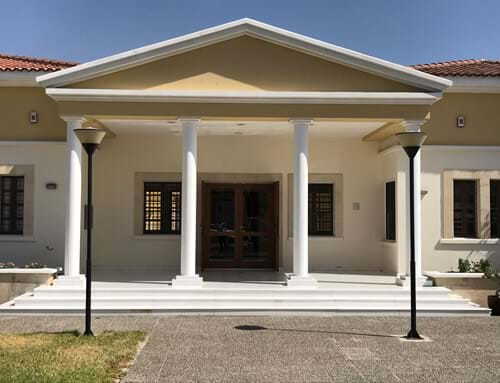The largest terracotta statue excavated in Cyprus can be seen in the Archaeological Museum in Polis. In the Archaic and Classical periods (750-312 BCE), the city-kingdom of Marion occupied the area. Marion was a major cult centre in the 5th-6th centuries BCE, drawing people from throughout the Eastern Mediterranean. Pieces of the statue were discovered by archaeologists in the 1980s during excavation at a sanctuary site. The sanctuary was entered through a colonnaded open forecourt. A visitor would then climb three steps to the patio before entering the inner chamber, which was covered. In one corner, though, the floor is made of lime-plaster rather than earth, suggesting that it was exposed to the sky. This is where most of the pieces of the colossal statue were found. At thirteen feet high, lit by the sun in a darkened room, and separated from the rest by a parapet, it would have made a dramatic impression. Votive statues were intended as gifts to the gods as well as displays of social status. Though most of the votives in the temple were devoted to Aphrodite, it seems that this one was meant for Zeus. His face shows Egyptianizing influences (it has a wig and false beard in the style of the pharaohs), while the hand follows the Greek style. It was despoiled along with most of the temple’s votives in 312 BCE, when the soldiers of Ptolemy I Soter destroyed Marion. Now painstakingly patched together by conservators, the statue welcomes you to contemplate its past. A visit is just a ten minute drive from Anassa.

